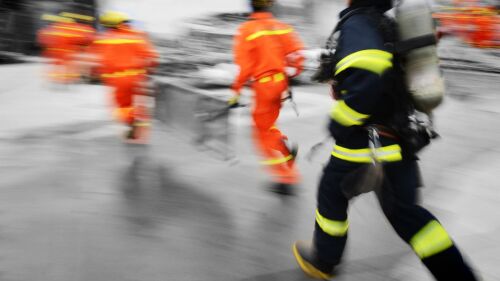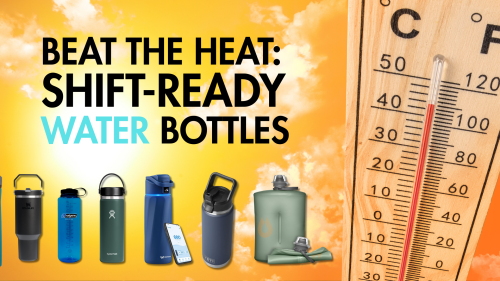BREAKING NEWS
Twelve psychiatric beds will reopen as part of Denver Health’s new Integrated Medical and Psychiatric Care Unit
Pridestar Trinity EMS, Lowell Fire and Lowell Police volunteered for the Heroes and Helpers shopping event
Austin-Travis County EMS special operations medics trained with veterinarians to learn how to treat K-9 officers.
State lawmakers are exploring ambulance-based telemedicine to support understaffed rural EMS crews, improve patient care and help retain paramedics and volunteers
A Bloom Township resident died after a carbon monoxide incident that also sent three civilians and seven firefighters to hospitals
EXCLUSIVES
SPECIAL REPORTS
UPCOMING & ON-DEMAND EVENTS
New insight into the latest technology
Addressing the hidden dangers of cardiovascular disease
Prepare for the impact of extreme weather on critical infrastructure and EMS operations
Creating, developing and sustaining your own program, step by step
Expert perspectives on improving patient outcomes
Learn from a real-world use case of the rescue strike team and the three phases of deployment
Janet Taylor shares assessment and management tips for mastering seizure thresholds, classification and treatment approaches
What if scheduling and finalizing a transport could be done in 60 seconds?
Learn common triggers, assessment findings, and the different phases and classifications of seizures
Key findings from the Verizon Frontline Public Safety Communications survey
A detailed look at the actions leaders can take to implement a systems-level plan to protect their members
Adopting programs to improve EMS service delivery and agency culture
INDUSTRY INSIGHTS
A webinar reviews key cases where the ‘most important vital sign’ helped shape care
It starts with sharpening decision-making skills
Protecting providers starts with a glove that won’t easily fail
Small changes to how EMS approaches airway management and ventilation can make big differences in OHCA outcomes
Lessons from agencies mastering real-time collaboration under pressure
OFF DUTY
Discover how providers can improve sleep and fight fatigue with simple changes like air filters, blackout curtains and humidity control
True-to-life emergency response finally gets the Hollywood treatment it deserves
Dive into a curated collection of must-read public safety books, from thrilling accounts and leadership lessons from the front lines, to read-aloud children’s favorites
Books
Explore the books EMS leaders, EMS1 contributors and experts recommend to advance your career, build leadership skills and inspire the next generation
How new federal tax rules could affect your paycheck, deductions and long-term savings
From paddleboarding and kayaking to fishing in remote areas, discover the gear, training and self-defense strategies outdoor enthusiasts need to stay safe on the water
Insulated, smart, and high-capacity bottles designed to help first responders beat dehydration on shift and beyond
What they’ll never tell you about why we stay
I lived to retire from the ambulance company
PRODUCT RESEARCH CATEGORIES
The EMS1 AEDs Automated External Defibrillators product category features information and product listings for researching AEDs, including defibrillators and data management solutions related to cardiac resuscitation..
The EMS1 Defibrillators and Monitors product category is a collection of information, product listings, and resources for researching Defibrillators and Monitors used by EMS personnel to aid in their assessment and treatment of patients.
The EMS1 Personal Protective Equipment (PPE) product category features products and information for researching EMS PPE, covering apparel, helmets, gloves, boots, outerwear and other equipment needed for safe and efficient emergency response.
The EMS1 EMS Body Camera product category is a collection of information, product listings and resources for researching Body-Worn Camera equipment and accessories for EMS providers.
The EMS1 Infection Control product category features products and information for researching EMS infection control, including antiseptic sprays, PPE, cleaners, respirator masks, and other tools to reduce risk of infection.
The EMS1 Patient Handling product category features products and information for researching EMS patient handling equipment, including stretchers, stair chairs, immobilization equipment, infection control and other tools for successful patient handling, lifting and moving.
The EMS1 EMS Scheduling and Time Tracking Software product category features products and information for researching software, staff management and scheduling tools.
The EMS1 Incident Management product category features products and information for researching EMS incident management, including software and other tools for successful incident management.
The Field Data Software product category is a collection of information and resources for researching EMS Field Data Software, including types of software, hardware, and reporting solutions that allow you to collect and track data while out on a call.
The EMS1 ePCR – Electronic Patient Care Reporting product category features information and resources for researching ePCR products, including solutions that allow you to collect patient information and care details electronically.



















































